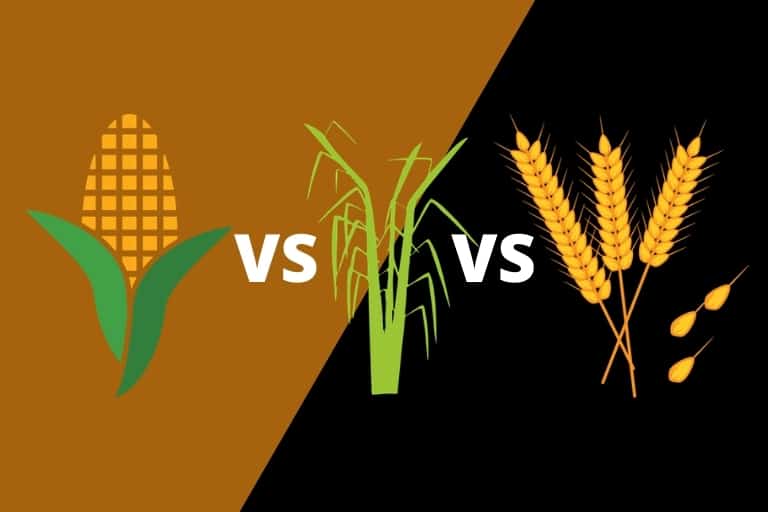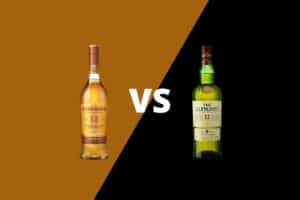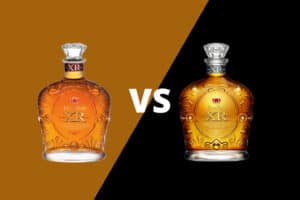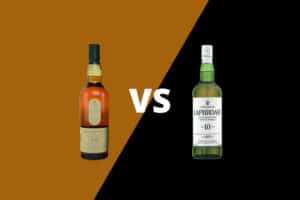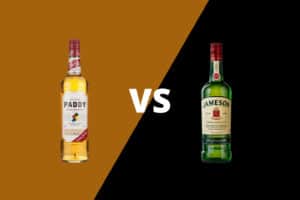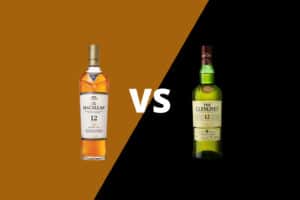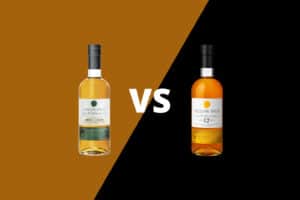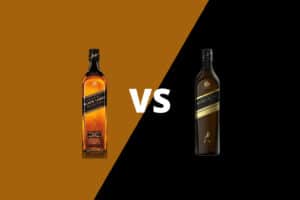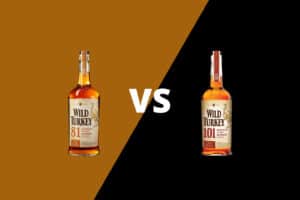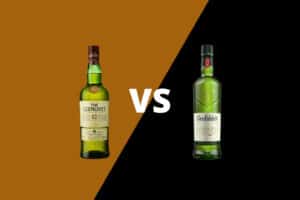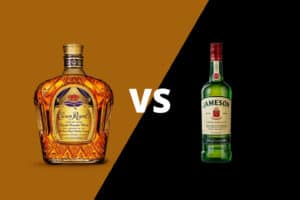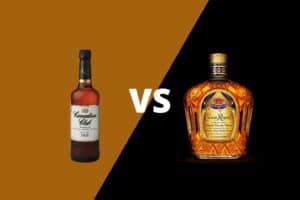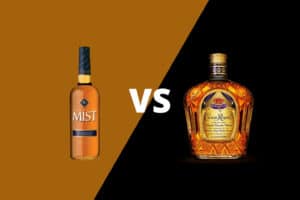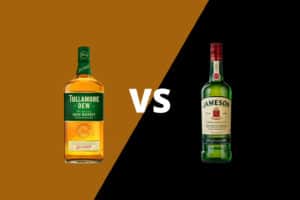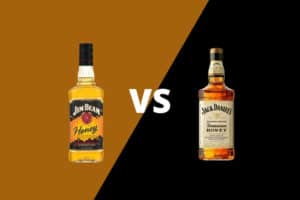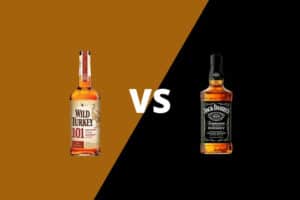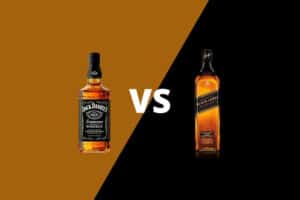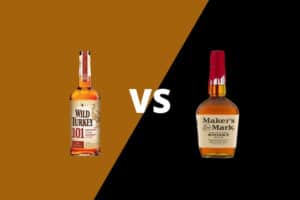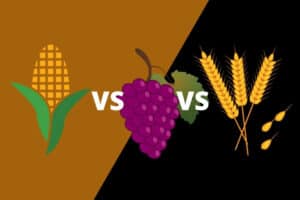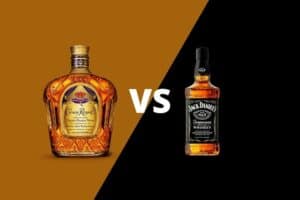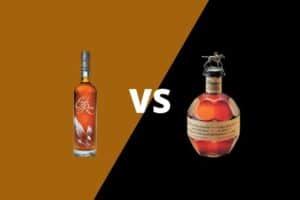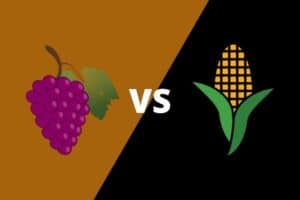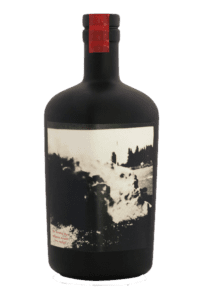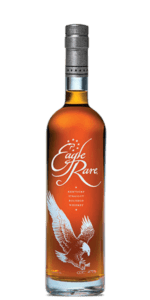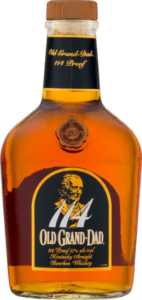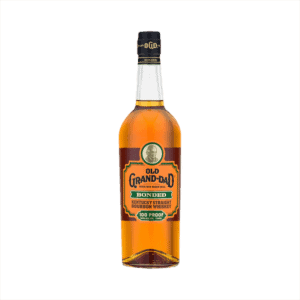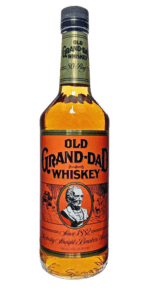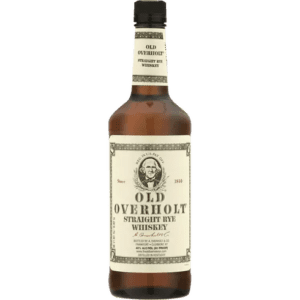Think of this as continued education in your matured spirits track.
So far, you’ve been learning more about distilled spirits, falling further and further down the rabbit hole. And you’re learning about mash bills and how other spirits like brandy are made.
Now it’s time to take the next logical leap.
In this post, we’ll walk you through three terms you’re likely to see while perusing the liquor aisle — Bourbon, Rum and Whiskey. We’ll describe each in depth and discuss what these brown (and sometimes clear) liquids have to offer and help you understand the differences and similarities inside each bottle.
Table of Contents
Bourbon vs. Rum vs. Whiskey: Key Differences
Whiskey is a term that describes any distilled spirit made from a mash of 100 percent grains. In this way, many people within the spirits industry consider whiskey a broad, overall category.
Bourbon is a sub-category of whiskey — all bourbons are whiskey, but not all whiskeys are bourbons. Other whiskey sub-categories include American rye and blended whiskey, blended and single malt Scotch, blended and single pot Irish whiskeys, Japanese whiskey and many more. By U.S. law recognized globally through international treaties, bourbon is a type of whiskey made in the United States from a mash bill of at least 51 percent corn and matured in new American oak barrels. We will go into additional production nuances in subsequent sections.
Rum is also a broad category, separate from whiskey and bourbon. If this was the taxonomy of species, think of rum and whiskey as being from entirely different kingdoms. Broadly, rum is a distilled product made from sugar cane, molasses – a byproduct of sugarcane cultivation – or sugar. Of course, there is more nuance below the surface, and we will get into that in subsequent sections as well.
Bourbon vs. Rum vs. Whiskey: Flavor Profiles
Due to the production nuances listed above and below, we can describe broad flavor profiles when comparing whiskey, bourbon, and rum.
Overall, whiskey carries over flavor from the grains used during fermentation. Common grains include malted barley, wheat, rye and corn in whiskey production. Learn more about their flavor comparisons in our all about mash bills post.
Bourbon has the overall flavor attributes of whiskey. But now, we will dial it in to reflect the specific types of grains typical in bourbon production — a high percentage of corn, commonly rounded out with rye, malted barley and (sometimes) wheat.
Corn adds a sweetness that has been associated with bourbon flavor, rye adds spicy pepper notes and wheat adds a soft and mellow character. Along with these grain influences, the fiercely and bold ‘American’ flavor that comes from aging in new charred American oak barrels is universally associated with the flavors one expects to find in a bottle of bourbon.
There are many styles of rum, all of which have the flavor of fermented sugar in common. Just as the corn in a Bourbon whiskey mash bill offers very different flavors to the trained palate than that of a single malt scotch whiskey mash bill of 100 percent malted barley, the composition of the rum mash also makes a significant impact on flavor. Pure sugarcane juice leads to clean and refreshing flavors, while the use of blackstrap molasses gives burnt brown sugar notes to the finished product. Spiced rum uses baking spices like nutmeg, cinnamon and vanilla beans to ramp up the complex wood flavors picked up from the cask inherent in all aged spirits. And, like bourbon and whiskey, the flavors of cheap spirits often reflect the imperfections of the base spirit, while those of high-end products made in copper pots with pure ingredients — like rhum Agricole — reflect the sophisticated bouquet of flavors and aromas expected by connoisseurs.
History
The history of any alcoholic beverage is tied to the history of the land from which it was born. Over the centuries, people have almost always fermented beverages using excess harvest… Or, they planted crops to ensure they had enough harvest to ferment… It’s a kind of chicken and egg thing that has been debated by archaeologists for decades 1.
This brings us to a crossroads that every spirits writer must cross when writing about the history of rum.
Rum production came about because of the triangle trade — the economic driver that made exploration and habitation economical in the new world. Through this engine, enslaved people were forcibly transported from Africa to the Caribbean, where sugar was produced from sugarcane on large plantations. Molasses — a byproduct of the sugar extraction process — was shipped to the East Coast of the United States, where it was then distilled into rum. Then, the finished rum and other continental goods like timber and cotton were loaded into cargo holds for the long trip back across the Atlantic.
Some might gloss over the unfortunate connection slavery has to the history of rum production in the Western Hemisphere, but we think it’s important to understand the economic drivers that made its initial popularity possible.
Molasses was a throwaway byproduct — it was initially discarded until growers realized it fermented naturally when exposed to ambient yeast — so any products extracted from the commodity led to pure profits. Sailors began to accept rum as payment, further increasing the efficiency of its production.
Today, Americans might not realize a thriving distilling industry was established in New England in the 17th century. At the time, states like Connecticut and Massachusetts distilled as much or more rum than islands like Jamaica and Barbados.
Before the triangle trade was established, brandy was the distilled beverage of choice for drinkers in Europe and the new colonies in North America. Even as rum gained acceptance and popularity, brandy and wine remained the favorite tipple of the aristocratic elite along the East Coast. It would take the expansion of these colonies westward across the mountain ranges that had once separated early colonies from the continent’s interior for whiskey to gain a foothold.
The long trek over Alleghenies to the frontier of Western Pennsylvania, and later Ohio and Kentucky required a caravan crossing that took months or longer on horseback, by covered wagon and for many long stretches on foot. The terrain made it uneconomical to lug large barrels of brandy, which can weigh about 500 pounds apiece. Without vineyards, grape wine and brandy became impractical, as did rum production without access to the ports that received Caribbean molasses. So, that left the plentiful grain that frontier families could cultivate in the rich regional soil. From their crop harvest, they could brew beer and distill it into whiskey.
In Western Pennsylvania and the Maryland panhandle, settlers relied heavily on rye — a hearty crop that withstood the harsh winters and was more resistant to disease. As those settlers moved into the prairie land of Kentucky, Indian maize, or corn, became a popular crop — and the local whiskey began to reflect that sweet corn profile. And, as settlers in both regions shipped oak barrels down the Ohio River to the port of New Orleans for sale, the benefits of charring the barrels before maturation became evident.
Distillation, Production & Maturation Comparison
We mentioned some of the ways these three spirit types are different. Check out the table below for some highlights on how each is made. As we progress through the rest of the post, consider the impact each has on the finished product’s flavor profile.
| Type | Fermentable Mash | Countries of Production | Maturation Required? | Flavoring? |
|---|---|---|---|---|
| Whiskey | Any combination of grains | Anywhere. (e.g., U.S., Scotland, Ireland, Canada, Japan) | Yes. Any wood cask (often used bourbon barrel) | Not allowed in the U.S. (unless described on the label) |
| Bourbon | At least 51% corn; remaining grains choice of distiller | U.S.A. | Yes. New charred American oak barrel | Not allowed (unless described on label) |
| Rum | Sugar cane juice, molasses, sugar, etc. | Anywhere (e.g., U.S., Caribbean, South America) | No. But some aged rums use ex-bourbon barrels or large casks | Yes. (e.g., coconut rum, spiced rum) |
Types of Rum
The same trait that makes rum such a vibrant spirits category is what makes defining sub-categories so challenging — it is made all over the globe, with each region having different product standards and histories that go back hundreds of years.
Let’s look at some examples of popular rum sub-categories.
White Rum — This term describes the spirit’s color — clear spirits are often referred to as ‘white.’ White rum is unaged rum that is diluted and bottled right off the still. It will have a more neutral flavor profile than aged or spiced rums, and is excellent for tall cocktails like the mojito.
Amber/Gold/ Oro Rum — This product reflects a traditional style of production that uses light maturation — a few months or up to a year in a wood barrel. However, some producers replicate the color and flavor with caramel or molasses to offer a brown spirit that is unaged but looks golden.
Dark Rum — Typically aged in charred oak barrels for an extended period — think six, seven or eight years or longer. But buyer beware, if it doesn’t have an age statement, there is no regulation in the U.S. preventing producers from mimicking a dark rum aesthetic through the use of artificial coloring.
Añejo — This term denotes extra maturation in oak. But beware of assuming how long it’s been in the barrel if you don’t see a specific age statement. (See above, below.)
Aged Rum — This product describes a product that uses wood barrels to add complex flavors to the rum distillate. Look for an age statement to differentiate aged rum from unaged dark rum products. In the U.S., these age statements are enforced the same as bourbon and other whiskeys.
Flavored Rum — Today, flavored rums run the gauntlet. For example, coconut rum is a favorite of bartenders — think piña colada. Spiced rum is another historical product that is very popular in the U.S. Producers macerate traditional baking spices like nutmeg, vanilla, cinnamon, nutmeg and clove in aged or unaged spirit. High-end spiced rums combine these spices in oak barrels, complimenting the baking spice flavor profile and adding complexity.
Different countries have different rules. For example, what is called ‘Añejo’ in one country might be required to be matured for three years while an ‘Añejo’ product in another country could be unaged. Compare this to Tequila, where U.S. trade agreements ensure every bottle was produced in Mexico and — thanks to Mexican law — every ‘Añejo’ is guaranteed to be aged between 12 and 36 months.
The U.S. only requires that rum be made from sugarcane and bottled above 80-proof. Other than that, it’s up to the country of origin to decide other terms. However, the knowledgeable spirits enthusiast can know what to look for on the label if they know a few things about the laws of the country in which it was made.
Jamaican Rum — This funky style of rum has been made on the island for centuries. It gets its complex fruity flavors from a style of fermentation that utilizes dunder — a intense-smelling yeast source that utilizes a portion of the previous fermentation’s ‘skimmings’ to start the subsequent fermentation. This practice is similar to sour mash fermentation in American whiskey making.
Rhum Agricole — This term describes rum made with pure sugarcane juice, as opposed to molasses, which makes it a much more premium product. Rhum Agricole is made throughout the Caribbean, but the most well-esteemed might be from Martinique — which the French government has granted the only appellation d’origine contrôlée (AOC) status in the world for rum.
Demerara Rum — A historical type of rum produced in Guyana.
Brazilian Rum — In Brazil, Cachaça is its own unique sub-category, distilled using sugar and corn syrup. Today, Cachaça is growing in popularity in the U.S., especially with craft bartenders who utilize its unique flavor profile in a wide range of cocktails.
American Rum — While rum made in the United States has a history that dates to 1657, much of that tradition was lost long before Prohibition. But today, a new generation of distillers across the nation — including in bourbon country — are making rum with the same attention to detail that has driven other categories in the craft distilling scene. Copper pot stills, local ingredients and charred barrel maturation are some of the innovative techniques applied to modern rum products.
Rum is a broad category that is difficult to define. In addition to the types listed above, there are also distinct styles of rum from Haiti, Barbados, Peurto Rico and many other countries across the globe.
Types of Whiskey
Bourbon is just one of the many types of whiskey available. Next time you’re in the whiskey aisle, check for the sections dedicated to each of these styles.
American Rye Whiskey — An older cousin of bourbon, this product must be made to the same standards, but with 51 percent or more rye.
[RELATED: Rye whiskey vs Bourbon]
Canadian Whisky — Over 95 percent of the Canadian whisky consumed in the U.S. is blended. A great example: Crown Royal.
Scotch Whisky — Scotch is a term used to describe any whisky from Scotland. Styles include single malt, made from 100 percent malted barley in a copper pot still, and blended scotch.
[RELATED: Scotch vs Bourbon]
American Malt Whiskey — A small but growing category, American malt whiskey is made from at least 51 percent malted barley.
Irish Whiskey — This term describes any whiskey from Ireland. While the majority is blended — e.g., Jameson — a growing number of single pot and single malt whiskeys made with 100 percent barley are becoming popular in the United States.
[RELATED: Irish whiskey vs Bourbon]
Japanese Whisky — While it has only caught on in the new millennium, the history of Japanese whisky is over 100 years old. Most products available in the U.S. are either single malt or blends, but a growing number of innovative ‘American style’ products hit the market.
Rum-Finished Whiskey —While we’re on the subject, there is a growing trend among whiskey makers in the United States, Scotland and other regions to use rum barrels to produce rum-finished whiskey. If you’re comparing these categories in a tasting, it might be worth getting your hands on one of these specialty products to see whether you think the two flavor profiles play nice together.
[SEE ALSO: Our Complete Guide on the Different Types of Whiskey]
Types of Bourbon
The three main types of bourbon are traditional, high-rye and wheated. You can learn more about each in our mash bill primer.
1 In The World Guide to Beer, brew expert and historian Michael Jackson referenced literature from the 1950s that suggested humans first cultivated crops to ensure a steady supply of booze.

